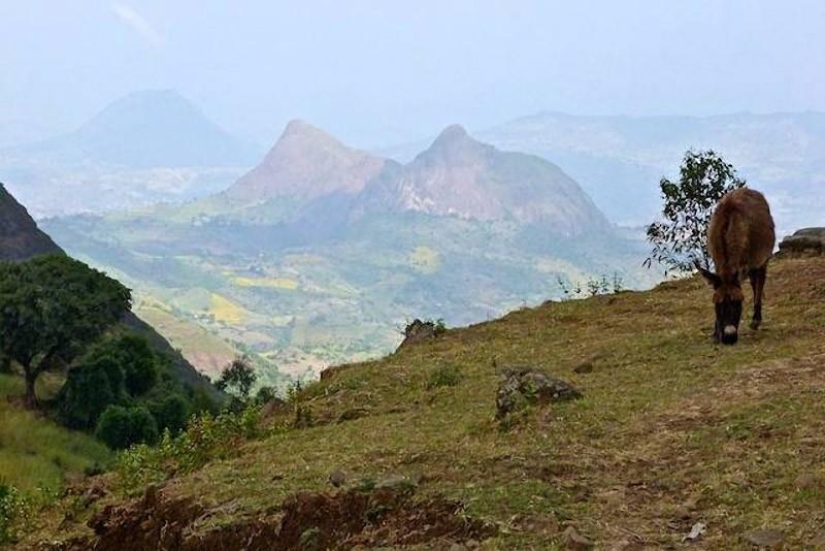"Roof of Africa": the impressive beauty of the Ethiopian highlands
In our time, spending a minimum of time, you can find information about the recent past of Ethiopia - rebellions, civil war and famine. And although it cannot be said that all troubles are behind, Ethiopia is not only grief and destruction. It is also the highest country on the continent, and it is no surprise that the Ethiopian highlands are called the "Roof of Africa". Here, without exaggeration, there is something to see.
(Total 22 photos)


1. The highlands have a huge territory and are divided by the Ethiopian rift.

2. All the shots that you will see are made in the northwestern part of the highlands.

3.

4. In 1969, the highlands were given the status of a national park (the first of ten in the country). The Simen and Ras Dashan mountains are located here.

5. Surprisingly, the higher you climb, the more moisture and lush vegetation.

6.

7. Ethiopia is close to the equator and you might think it's hot here. However, the significant height of the highlands makes the climate of the whole country unexpectedly moderate.

8. Monsoons from the Indian Ocean are caught by the mountains, which leads to torrential downpours. The rainy season lasts from July to September. At this time, the Nile overflows its banks.

9.

10. Although the flora here is predominantly of African origin (it is also called Afromontane), nevertheless, there are also some representatives of the Eurasian flora (Palearctic), which have been growing here since the Ice Age.

11. This highland began to form more than 75 million years ago from a split that divides the valley into separate massifs - amba, formed about 30 million years ago.

12.

13. The highlands are not only divided by the East African Rift Valley, but contain 3 ecoregions that differ in height.

14.

15. Two Ethiopian national parks, Simen and Bale Mountains, are gradually and inevitably losing their inhabitants due to human encroachment.

16.

17. Highlanders do not have access to modern farming technology. Plowing the field is carried out in the same way as many centuries ago. But, nevertheless, the Ethiopians invented an unusual way of drying hay and hiding it from herbivores.

18.

19. Thus, although the national park was created in 1969, already in 1978 it was placed on the UNESCO World Heritage List, which is in danger of disappearing. The populations of the Park's endemic species, such as the Ethiopian wolf, caracal and gelada, are rapidly declining in number.

20.

21. However, the Ethiopian Highlands remains a unique place on Earth that seems slightly otherworldly and unreal, and where the traveler is truly breathtaking in the beauty of nature.

22.
Keywords: Mountains | Ethiopia
Post News ArticleRecent articles

Gerard Uferas is one of the most renowned and vibrant contemporary French photographers. His talent is multifaceted, but Uferas is ...

In 1969, a healthy food restaurant opened on the Sunset Strip in Los Angeles-one of the first in the country, and possibly in the ...
Related articles

Polish photographer David Kashlikowski took amazing pictures of a glacier in the Karakoram mountain system in Pakistan from a ...

The story of Robinson Crusoe, told the English writer Daniel Defoe, familiar to all of us from the school bench. The novel has seen ...

For thrills, there is no need to go to the room of fear — these photos will bring you terror and chills. Those who are afraid of ...

Colin and Kristin Poole are an amazing creative family. Colin is a world-renowned artist, and his wife Kristin is a wonderful ...